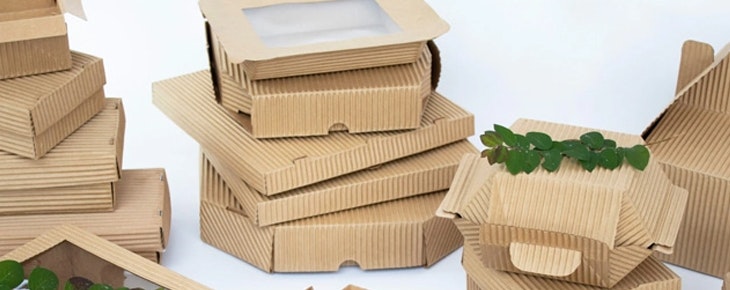The packaging of dairy products has experienced major changes throughout time in the constantly evolving food business. From traditional methods of preservation to modern advancements in packaging technology, the evolution of food packaging in the dairy product industry has played a crucial role in ensuring product safety, extending shelf life, and enhancing convenience for consumers. This blog explores the journey of food packaging in the dairy industry, highlighting key milestones. We will also explore the impact of it on the way we consume dairy products today.
1. Early Methods of Dairy Product Packaging
Before the advent of modern packaging techniques, dairy products were often sold in bulk or stored in simple containers. Storing milk products in clay pots, wooden barrels, or glass jars are old methods. These methods provided limited protection against contamination, spoilage, and the degradation of nutritional quality. Dairy products thus had a much shorter shelf life and were only readily available in local shops.
2. Emergence of Paperboard and Cartons
The early 20th century witnessed the introduction of paperboard and cartons as a primary packaging material for dairy products. This innovation offered several advantages, including better protection against light, moisture, and air, which helped to preserve the freshness and quality of dairy products for longer periods. Cartons were also lightweight and easy to stack, making transportation and storage more convenient for both producers and consumers.
3. Tetra Pak Revolutionizes Packaging
In the 1950s, the Swedish company Tetra Pak revolutionized the dairy product packaging industry with the introduction of aseptic packaging. Tetra Pak’s aseptic cartons featured a multi-layered structure consisting of paper, aluminum, and plastic, providing an optimal barrier against oxygen, light, and bacteria. This groundbreaking technology allowed dairy products to be packaged in a sterile environment. It ensures extended shelf life without the need for refrigeration or preservatives. Aseptic packaging also opened up new markets for dairy products by enabling long-distance transportation and expanding their reach beyond local boundaries.
4. Shift to Plastic Packaging
Due to its adaptability, affordability, and durability, plastic container packaging rose in demand in the 1960s and 1970s. Due to their improved resistance to breakage and leakage, high-density polyethylene and polyethylene terephthalate materials are now often utilized for dairy product packaging. Plastic containers, such as bottles and tubs, allowed for improved product visibility and branding, attracting consumers with appealing designs and labels. Additionally, the lightweight nature of plastic packaging reduced transportation costs and environmental impact .
5. Sustainable Packaging Solutions
With growing environmental concerns, the dairy industry has made significant strides in adopting sustainable packaging solutions. Several alternatives to conventional plastic packaging have emerged, including biodegradable and compostable materials. . Plant based plastics, such as polylactic acid, derived from renewable sources, extracted from corn starch, offer comparable performance to traditional plastics while being more environmental friendly. Recyclable packaging, including cardboard cartons and paper-based containers, have also gained popularity due to their reduced carbon footprint.
6. Innovations in Convenience and Functionality
In recent years, dairy product packaging has focused on enhancing convenience and functionality for consumers. Single-serve portion packaging, resealable containers, and easy-to-open lids have become common features, catering to the needs of busy individuals and promoting portion control. Furthermore, packaging innovations such as transparent windows, tamper-evident seals, and informative labels provide consumers with the assurance of product quality, nutritional information, and ingredient transparency.
7. Smart Packaging and Digital Integration
The future of food packaging in the dairy industry lies in smart packaging and digital integration. Intelligent packaging solutions, equipped with sensors and indicators, can monitor product freshness, temperature, and quality continuously. This real-time data can be transmitted to consumers’ smartphones or other devices. It allows them to make informed decisions about the freshness of dairy products.
Furthermore, smart packaging can contribute to reducing food waste. By tracking expiration dates and sending reminders to consumers, it helps them utilize products before they spoil, minimizing unnecessary discards and promoting sustainability.
The future of food packaging in the dairy industry lies in smart packaging and digital integration. Intelligent packaging solutions, equipped with sensors and indicators, can monitor product freshness, temperature, and quality continuously. This real-time data can be transmitted to consumers’ smartphones or other devices. It allows them to make informed decisions about the freshness of dairy products.
8. The Role of Packaging in Food Safety
The dairy industry places a high priority on the safety of food, and packaging is crucial in maintaining the quality of dairy products. Packaging materials with proper barrier properties and sealing techniques prevent contamination by microorganisms, pests, and oxygen, thereby safeguarding the quality and safety of the products. Additionally, tamper-evident seals and anti-counterfeiting measures provide consumers with assurance and confidence in the authenticity of the dairy products they purchase.
9. Environmental Considerations and Circular Economy
As environmental awareness grows, the dairy industry is increasingly focused on reducing packaging waste and promoting a circular economy. Environment friendly packaging materials that are recyclable, and biodegradable are currently being developed. Manufacturers are also exploring innovative solutions, such as refillable packaging and bulk dispensers to reduce single-use packaging.
Conclusion
The evolution of food packaging in the dairy product industry has come a long way, transforming from basic containers to advanced technologies that prioritize product safety, shelf life extension, and consumer convenience. From the emergence of paperboard cartons to the revolutionary aseptic packaging by Tetra Pak, the industry has continuously strived for better preservation methods and wider market reach. Plastic packaging brought durability and versatility, while sustainable packaging solutions are now gaining momentum with a focus on environmental impact. The future of dairy product packaging lies in smart packaging and digital integration, enhancing functionality and consumer engagement. In the end, the dairy product business will depend heavily on packaging to maintain food safety, reduce waste, and satisfy changing customer demands.
Published July 11, 2023 Propak India
Categorized as VISITOR SEGMENTS Tagged Packaging In The Dairy Product Industry

